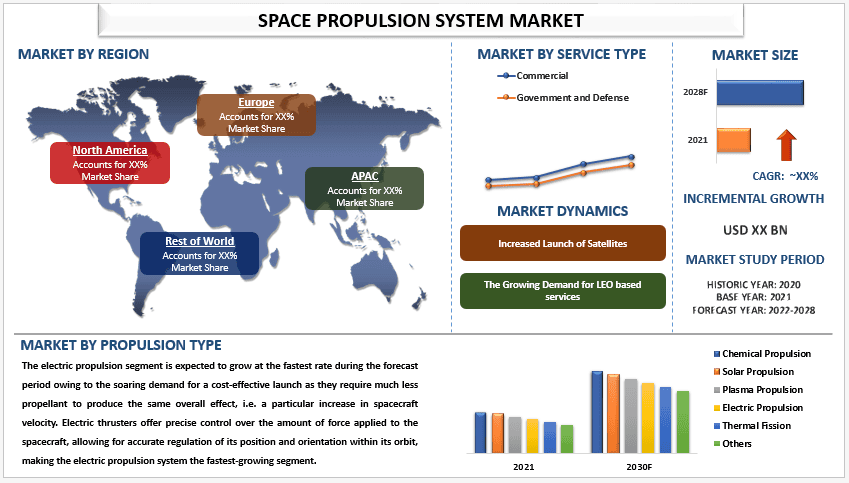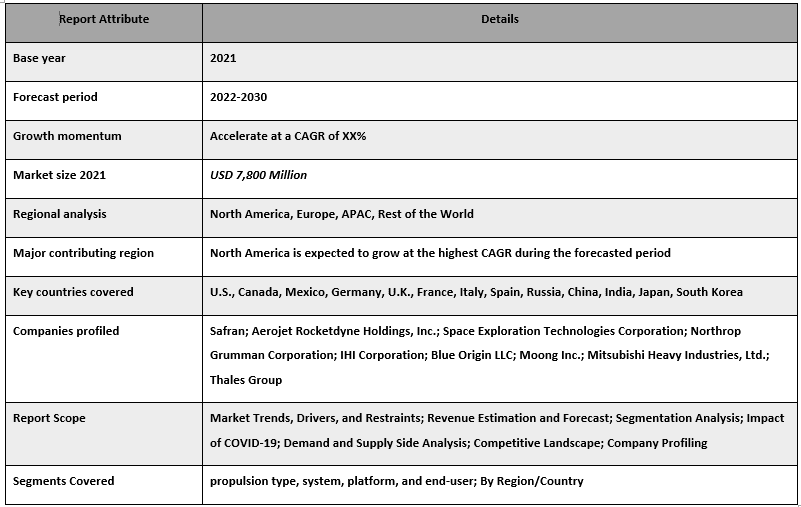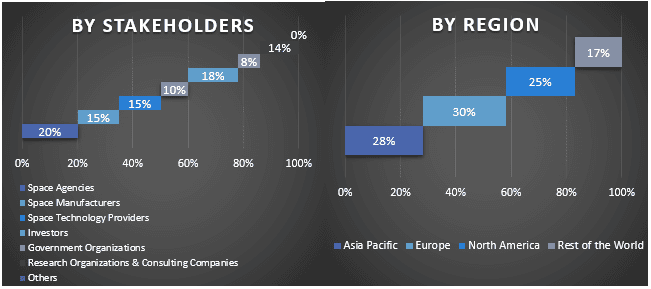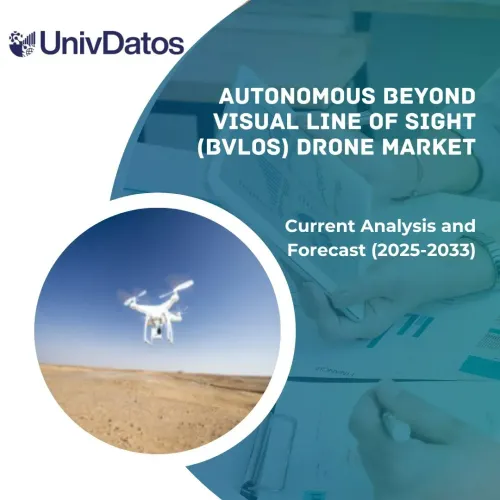- Trang chủ
- Về chúng tôi
- Ngành
- Dịch vụ
- Đọc
- Liên hệ với chúng tôi
Thị trường Hệ thống Động cơ đẩy Không gian: Phân tích Hiện tại và Dự báo (2022-2030)
Tập trung vào Loại Động cơ ((Động cơ Hóa học, Động cơ Mặt trời, Động cơ Plasma, Động cơ Nhiệt hạch phân hạch, Các loại khác (Động cơ Ion, Nhiệt hạch liên tục, Loại khác)), Hệ thống (Bộ đẩy, Hệ thống Cấp nhiên liệu đẩy, Động cơ tên lửa, Vòi phun, Kiểm soát Nhiệt động cơ đẩy và Bộ xử lý năng lượng), Nền tảng (Vệ tinh, Phương tiện phóng, Tàu tự hành/Tàu đổ bộ, Khoang/Hàng hóa, Tàu vũ trụ và Tàu thăm dò liên hành tinh), Người dùng cuối (Thương mại và Chính phủ & Quốc phòng); và Khu vực/Quốc gia

Thị trường Hệ thống Động cơ đẩy Không gian được định giá 7.800 triệu USD vào năm 2021 và dự kiến sẽ tăng trưởng với tốc độ CAGR là 22,0% từ năm 2022-2030. Do nhu cầu ngày càng tăng đối với các dịch vụ dựa trên LEO. Vệ tinh LEO đề cập đến các vệ tinh quỹ đạo thấp, tương đối gần bề mặt Trái đất. Vệ tinh LEO thường được đặt ở độ cao dưới 1000 km nhưng có thể thấp tới 160 km so với Trái đất - mức thấp so với các quỹ đạo khác. Vệ tinh LEO chủ yếu được sử dụng trong các lĩnh vực khác nhau như viễn thông, nông nghiệp và quốc phòng để chụp ảnh, vì ở gần bề mặt cho phép chúng chụp ảnh có độ phân giải cao hơn. Hơn nữa, các vệ tinh này chủ yếu được sử dụng cho Trạm vũ trụ quốc tế (ISS), vì các phi hành gia dễ dàng di chuyển đến và đi từ đó hơn ở khoảng cách ngắn hơn. Ngoài ra, vệ tinh LEO đóng vai trò quan trọng trong lĩnh vực viễn thông khi ngày càng có nhiều quốc gia áp dụng công nghệ 5G để có kết nối internet và thoại tốt hơn, và vệ tinh LEO đang thúc đẩy nhu cầu về nó. Ví dụ: vào tháng 3 năm 2023, Bharti Group, một tập đoàn có trụ sở tại Ấn Độ hoạt động trong lĩnh vực viễn thông có tên là Airtel India, đã phóng một lô 36 vệ tinh khác từ trung tâm vũ trụ ISRO ở Sriharikota. Công ty đưa số lượng vệ tinh quỹ đạo thấp (LEO) của OneWeb lên 618, định vị công ty này để bắt đầu các dịch vụ băng thông rộng vệ tinh toàn cầu vào cuối năm 2023.
Do đó, nhu cầu ngày càng tăng đối với các dịch vụ dựa trên LEO thúc đẩy thị trường hệ thống động cơ đẩy không gian.
Một số công ty lớn đang hoạt động trên thị trường bao gồm Safran; Aerojet Rocketdyne Holdings, Inc.; Space Exploration Technologies Corporation; Northrop Grumman Corporation; IHI Corporation; Blue Origin LLC; Moong Inc.; Mitsubishi Heavy Industries, Ltd.; Thales Group. Một số hoạt động M&A cùng với các quan hệ đối tác đã được thực hiện bởi những công ty này để tạo điều kiện cho khách hàng với các sản phẩm/công nghệ công nghệ cao và sáng tạo.
Thông tin chi tiết được trình bày trong Báo cáo
“Trong số các loại động cơ đẩy, phân khúc động cơ đẩy điện có tốc độ tăng trưởng nhanh nhất vào năm 2021”
Dựa trên loại động cơ đẩy, thị trường được phân chia thành động cơ đẩy hóa học, động cơ đẩy mặt trời, động cơ đẩy plasma, động cơ đẩy điện, động cơ đẩy phân hạch nhiệt và các loại khác. Phân khúc động cơ đẩy điện là phân khúc phát triển nhanh nhất vào năm 2021 và dự kiến sẽ tăng trưởng với tốc độ nhanh nhất trong giai đoạn dự báo do nhu cầu ngày càng tăng đối với việc phóng hiệu quả về chi phí vì chúng cần ít chất đẩy hơn nhiều để tạo ra hiệu quả tổng thể tương tự, tức là sự gia tăng cụ thể về vận tốc tàu vũ trụ. Chất đẩy được phóng ra nhanh hơn tới hai mươi lần so với các động cơ đẩy cổ điển và do đó, lực đẩy tương tự thu được với chất đẩy ít hơn hai mươi lần. Động cơ đẩy điện cung cấp khả năng kiểm soát chính xác lượng lực tác dụng lên tàu vũ trụ, cho phép điều chỉnh chính xác vị trí và hướng của nó trong quỹ đạo, khiến hệ thống động cơ đẩy điện trở thành phân khúc phát triển nhanh nhất.
“Trong số các hệ thống, động cơ đẩy chiếm phần lớn thị phần vào năm 2021”
Dựa trên hệ thống, thị trường được phân chia thành động cơ đẩy, hệ thống cấp liệu chất đẩy, động cơ tên lửa, vòi phun, kiểm soát nhiệt động cơ đẩy và các bộ xử lý nguồn. Phân khúc động cơ đẩy dự kiến sẽ có thị phần cao nhất vào năm 2021 cũng như giai đoạn dự báo do cung cấp khả năng kiểm soát quỹ đạo gia tốc lực đẩy thấp của vệ tinh. Động cơ đẩy chủ yếu được sử dụng để điều động tàu vũ trụ trong khu vực vì chúng giúp điều chỉnh quỹ đạo của máy bay, duy trì hướng của nó và trao đổi vận tốc của nó. Luôn có nỗi sợ va chạm với các mảnh vỡ trong không gian, động cơ đẩy giúp tránh va chạm với các mảnh vỡ hoặc các vật thể khác trong không gian.
“Bắc Mỹ thống trị thị trường hệ thống động cơ đẩy không gian vào năm 2021”
Khu vực Bắc Mỹ đã thống trị thị trường vào năm 2021 và được dự đoán sẽ là khu vực thống trị trong giai đoạn dự báo vì khu vực này có số lượng cơ quan vũ trụ cao nhất, ngân sách vũ trụ cao và sự phát triển của công nghệ tiên tiến. Ví dụ: vào tháng 3 năm 2023, theo bài báo do NASA xuất bản từ Ngân sách tài khóa năm 2024 của Tổng thống, cho biết nó sẽ cho phép NASA tiếp tục mở rộng bằng cách hỗ trợ 1,39 tỷ USD cho nghiên cứu và phát triển các công nghệ mới sẽ nâng cao khả năng khám phá không gian và tạo cơ hội việc làm thông qua sự tăng trưởng của các công ty vũ trụ thương mại.
Phạm vi Báo cáo Thị trường Hệ thống Động cơ đẩy Không gian

Lý do nên mua báo cáo này:
- Nghiên cứu bao gồm phân tích kích thước thị trường và dự báo được xác thực bởi các chuyên gia ngành công nghiệp quan trọng đã được xác thực.
- Báo cáo trình bày đánh giá nhanh về hiệu suất tổng thể của ngành trong nháy mắt.
- Báo cáo bao gồm một phân tích chuyên sâu về các đồng nghiệp nổi bật trong ngành với trọng tâm chính là các số liệu tài chính kinh doanh chính, danh mục sản phẩm, chiến lược mở rộng và các phát triển gần đây.
- Kiểm tra chi tiết các động lực, hạn chế, xu hướng chính và cơ hội thịnh hành trong ngành.
- Nghiên cứu bao gồm toàn diện thị trường trên các phân khúc khác nhau.
- Phân tích sâu cấp khu vực của ngành.
Tùy chọn Tùy chỉnh:
Thị trường hệ thống động cơ đẩy không gian toàn cầu có thể được tùy chỉnh thêm theo yêu cầu hoặc bất kỳ phân khúc thị trường nào khác. Bên cạnh đó, UMI hiểu rằng bạn có thể có nhu cầu kinh doanh riêng, do đó, vui lòng liên hệ với chúng tôi để nhận một báo cáo hoàn toàn phù hợp với yêu cầu của bạn.
Mục lục
Phương Pháp Nghiên Cứu cho Phân Tích Thị Trường Hệ Thống Động Cơ Đẩy Không Gian (2022-2030)
Phân tích thị trường lịch sử, ước tính thị trường hiện tại và dự báo thị trường tương lai của thị trường hệ thống động cơ đẩy không gian toàn cầu là ba bước chính được thực hiện để tạo và phân tích việc áp dụng hệ thống động cơ đẩy không gian ở các khu vực chính trên toàn cầu. Nghiên cứu thứ cấp chuyên sâu đã được tiến hành để thu thập số liệu thị trường lịch sử và ước tính quy mô thị trường hiện tại. Thứ hai, để xác thực những thông tin chi tiết này, nhiều phát hiện và giả định đã được xem xét. Hơn nữa, các cuộc phỏng vấn sơ cấp chuyên sâu cũng được thực hiện với các chuyên gia trong ngành trên toàn bộ chuỗi giá trị của thị trường hệ thống động cơ đẩy không gian toàn cầu. Sau khi giả định và xác thực số liệu thị trường thông qua các cuộc phỏng vấn sơ cấp, chúng tôi đã sử dụng phương pháp tiếp cận từ trên xuống/từ dưới lên để dự báo quy mô thị trường hoàn chỉnh. Sau đó, các phương pháp phân tích dữ liệu chi tiết và tam giác dữ liệu đã được áp dụng để ước tính và phân tích quy mô thị trường của các phân khúc và phân khúc con của ngành liên quan đến. Phương pháp luận chi tiết được giải thích dưới đây:
Phân tích Quy mô Thị trường Lịch sử
Bước 1: Nghiên cứu Chuyên sâu về Nguồn Thứ cấp:
Nghiên cứu thứ cấp chi tiết đã được tiến hành để thu thập quy mô thị trường lịch sử của thị trường hệ thống động cơ đẩy không gian thông qua các nguồn nội bộ của công ty như báo cáo thường niên & báo cáo tài chính, các bài thuyết trình về hiệu suất, thông cáo báo chí, v.v., và các nguồn bên ngoài bao gồm tạp chí, tin tức & bài viết, ấn phẩm của chính phủ, ấn phẩm của đối thủ cạnh tranh, báo cáo ngành, cơ sở dữ liệu của bên thứ ba và các ấn phẩm đáng tin cậy khác.
Bước 2: Phân khúc Thị trường:
Sau khi thu được quy mô thị trường lịch sử của thị trường hệ thống động cơ đẩy không gian, chúng tôi đã tiến hành phân tích thứ cấp chi tiết để thu thập thông tin chi tiết về thị trường lịch sử và chia sẻ cho các phân khúc & phân khúc con khác nhau cho các khu vực chính. Các phân khúc chính bao gồm trong báo cáo là loại dịch vụ, loại, khoảng cách, loại động cơ đẩy và chế độ nền tảng. Các phân tích cấp quốc gia sâu hơn đã được tiến hành để đánh giá việc áp dụng tổng thể các mô hình thử nghiệm trong khu vực đó.
Bước 3: Phân tích Yếu tố:
Sau khi thu được quy mô thị trường lịch sử của các phân khúc và phân khúc con khác nhau, chúng tôi đã tiến hành phân tích yếu tố chi tiết để ước tính quy mô thị trường hiện tại của thị trường hệ thống động cơ đẩy không gian. Hơn nữa, chúng tôi đã tiến hành phân tích yếu tố bằng cách sử dụng các biến phụ thuộc và độc lập như loại dịch vụ, loại, khoảng cách, loại động cơ đẩy và chế độ nền tảng của thị trường hệ thống động cơ đẩy không gian. Một phân tích kỹ lưỡng đã được tiến hành cho các kịch bản cung và cầu, có tính đến các quan hệ đối tác hàng đầu, sáp nhập và mua lại, mở rộng kinh doanh và ra mắt sản phẩm trong lĩnh vực thị trường hệ thống động cơ đẩy không gian trên toàn cầu.
Ước tính & Dự báo Quy mô Thị trường Hiện tại
Xác định Quy mô Thị trường Hiện tại: Dựa trên những hiểu biết sâu sắc có thể hành động từ 3 bước trên, chúng tôi đã xác định được quy mô thị trường hiện tại, các công ty chủ chốt trên thị trường hệ thống động cơ đẩy không gian toàn cầu và thị phần của các phân khúc. Tất cả các tỷ lệ phần trăm cần thiết và phân tích thị trường đã được xác định bằng cách sử dụng phương pháp thứ cấp đã đề cập ở trên và được xác minh thông qua các cuộc phỏng vấn sơ cấp.
Ước tính & Dự báo: Để ước tính và dự báo thị trường, trọng số đã được gán cho các yếu tố khác nhau bao gồm các động lực & xu hướng, hạn chế và cơ hội có sẵn cho các bên liên quan. Sau khi phân tích các yếu tố này, các kỹ thuật dự báo liên quan, tức là phương pháp tiếp cận từ trên xuống/từ dưới lên đã được áp dụng để đưa ra dự báo thị trường cho năm 2028 cho các phân khúc và phân khúc con khác nhau trên các thị trường lớn trên toàn cầu. Phương pháp nghiên cứu được áp dụng để ước tính quy mô thị trường bao gồm:
- Quy mô thị trường của ngành, về mặt doanh thu (USD) và tỷ lệ chấp nhận của thị trường hệ thống động cơ đẩy không gian trên các thị trường lớn trong nước
- Tất cả các tỷ lệ phần trăm, phân chia và phân tích của các phân khúc và phân khúc con của thị trường
- Những công ty chủ chốt trên thị trường hệ thống động cơ đẩy không gian toàn cầu về các sản phẩm được cung cấp. Ngoài ra, các chiến lược tăng trưởng được các công ty này áp dụng để cạnh tranh trên thị trường đang phát triển nhanh chóng
Xác thực Quy mô và Thị phần Thị trường
Nghiên cứu Sơ cấp: Các cuộc phỏng vấn chuyên sâu đã được thực hiện với những Người có Quan điểm Chủ chốt (KOL), bao gồm các Giám đốc Điều hành Cấp cao (CXO/VP, Trưởng phòng Kinh doanh, Trưởng phòng Marketing, Trưởng phòng Vận hành, Trưởng phòng Khu vực, Trưởng phòng Quốc gia, v.v.) trên các khu vực chính. Các phát hiện nghiên cứu sơ cấp sau đó đã được tóm tắt và phân tích thống kê đã được thực hiện để chứng minh giả thuyết đã nêu. Thông tin đầu vào từ nghiên cứu sơ cấp đã được hợp nhất với các phát hiện thứ cấp, do đó biến thông tin thành những hiểu biết sâu sắc có thể hành động.
Phân chia Người tham gia Sơ cấp ở các Khu vực khác nhau

Kỹ thuật Thị trường
Kỹ thuật tam giác dữ liệu đã được sử dụng để hoàn thành ước tính thị trường tổng thể và để đưa ra các số liệu thống kê chính xác cho từng phân khúc và phân khúc con của thị trường hệ thống động cơ đẩy không gian toàn cầu. Dữ liệu được chia thành một số phân khúc & phân khúc con sau khi nghiên cứu các thông số và xu hướng khác nhau trong các lĩnh vực loại dịch vụ, loại, khoảng cách, loại động cơ đẩy và chế độ nền tảng trong thị trường hệ thống động cơ đẩy không gian toàn cầu.
Mục tiêu chính của Nghiên cứu Thị trường Hệ thống Động cơ Đẩy Không gian Toàn cầu
Các xu hướng thị trường hiện tại & tương lai của thị trường hệ thống động cơ đẩy không gian toàn cầu đã được xác định rõ trong nghiên cứu. Các nhà đầu tư có thể thu được những hiểu biết sâu sắc về chiến lược để làm cơ sở cho quyết định đầu tư của họ dựa trên phân tích định tính và định lượng được thực hiện trong nghiên cứu. Các xu hướng thị trường hiện tại và tương lai xác định sức hấp dẫn tổng thể của thị trường ở cấp độ khu vực, cung cấp một nền tảng cho người tham gia công nghiệp khai thác thị trường chưa được khai thác để hưởng lợi từ lợi thế của người đi đầu. Các mục tiêu định lượng khác của các nghiên cứu bao gồm:
- Phân tích quy mô thị trường hiện tại và dự báo của thị trường hệ thống động cơ đẩy không gian về giá trị (USD). Ngoài ra, hãy phân tích quy mô thị trường hiện tại và dự báo của các phân khúc và phân khúc con khác nhau
- Các phân khúc trong nghiên cứu bao gồm các lĩnh vực loại động cơ đẩy, hệ thống, nền tảng và người dùng cuối
- Xác định và phân tích khuôn khổ pháp lý cho ngành công nghiệp hệ thống động cơ đẩy không gian
- Phân tích chuỗi giá trị liên quan đến sự hiện diện của nhiều trung gian khác nhau, cùng với việc phân tích hành vi của khách hàng và đối thủ cạnh tranh trong ngành
- Phân tích quy mô thị trường hiện tại và dự báo của thị trường hệ thống động cơ đẩy không gian cho khu vực chính
- Các quốc gia chính của khu vực được nghiên cứu trong báo cáo bao gồm Châu Á Thái Bình Dương, Châu Âu, Bắc Mỹ và Phần còn lại của Thế giới
- Hồ sơ công ty của thị trường hệ thống động cơ đẩy không gian và các chiến lược tăng trưởng được các công ty tham gia thị trường áp dụng để duy trì trên thị trường đang phát triển nhanh chóng
- Phân tích sâu cấp khu vực của ngành
Liên quan Báo cáo
Khách hàng đã mua mặt hàng này cũng đã mua










